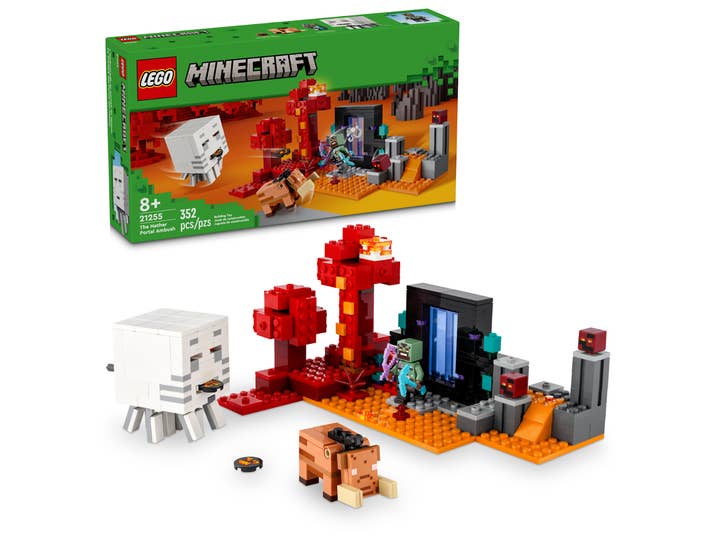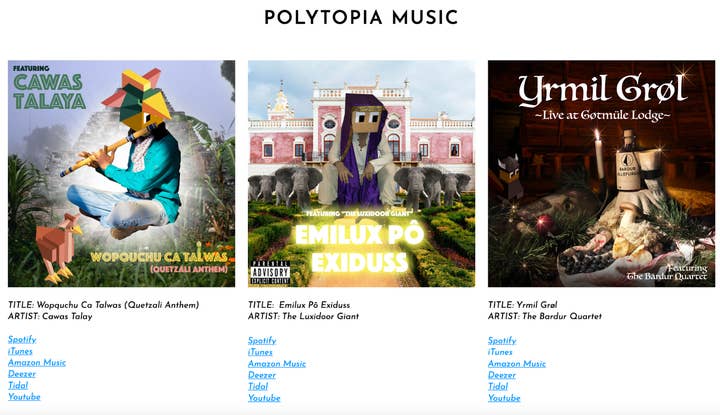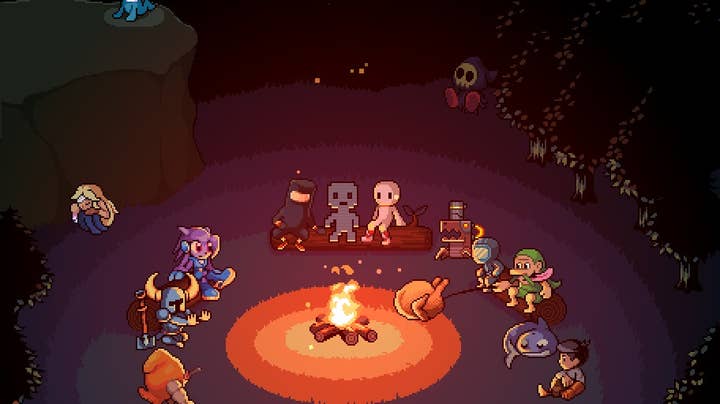If you’re reading this article, you’ve likely created an original IP or are planning an original title. Your game may be performing well and you’ve got a regular fanbase in place, but what next?
In recent times, we’ve seen many gaming IPs take a trip to Hollywood as a new way of engaging audiences. The Super Mario Bros Movie broke box office records and Fallout and The Witcher have both appealed to television audiences. Even indie IP is facing the Hollywood treatment, with an all-star Among Us animated series incoming, and a Vampire Survivors TV show seemingly on its way.
But Hollywood isn’t the only avenue to expand your original indie IP; various indie developers have explored new ways of reaching audiences beyond the screen, and this article shares the methods for doing so.
Look within the game
Lore goes hand-in-hand with building an original IP. As your game expands and narrative becomes richer, your IP strengthens with additional characters and backstory your playerbase finds an affinity for. Developing lore is crucial to give the game a personality, and build community.
Minecraft is an example of this. Although now considered one of the most popular games in history, it started off as an indie title. Over time, the game has expanded with new mobs, items, and even parallel dimensions. Take the Nether for example, although not in the original release, the fiery world is now a key feature of the title, sparking numerous LEGO sets.

Indeed, before talk of spinoffs and sequels, building a strong IP for the original title takes time; in our case, we’ve worked on The Battle of Polytopia for eight years. Our game doesn’t have a protagonist, instead we offer tribes for players to choose from. Each of these have unique personalities and gameplay behaviour and we celebrate each tribe throughout the year in what we call ‘Tribe Moons’. Each month, we shine a spotlight on a tribe, running tribe-specific esports tournaments and developing additional lore and accompanying cinematics, some of which have been inspired by community discussions.
Nurturing and consulting your player base is an effective way to give players a stake in the IP, but don’t feel pressured to make all the changes they demand.
Don’t just see your overall game as a single IP, but instead look at highlighting specific characters or groups in your game – you can highlight more than a single mascot!
The power of music
Another way to reach audiences outside of your game is through music. Indie titles are full of some of the greatest original music in entertainment, just listen to the soundtrack of Gris!
Music is used to let fans engage with a game no matter their location. Releasing soundtracks on streaming platforms is a great way of introducing your game to new listeners too; gaming soundtracks are often included in study or relaxing playlists thanks to their instrumental nature. They can then reach the ears of non-players who first come in contact with the songs and then discover the game.
You can also have fun with these releases! In line with celebrating the uniqueness found within the tribes, we’ve developed cover art that match the personality and regional influences.

It’s not all digital however. More and more indie developers such as Jump Over The Age (Citizen Sleeper) are releasing their soundtracks on vinyl with labels such as Lost in Cult. However they may listen, making your soundtrack accessible to players is a great way of keeping the game front of mind.
Partner with indies
Partnerships are another great way to reach new audiences. One type of partnership can be found within games themselves. There are countless examples of indie developers featuring gaming IP across titles. Indie Pogo is perhaps the biggest example of this, bringing characters from 50 indie studios together in a Smash Bros-inspired title. Shovel Knight’s fandom page includes a seemingly-endless list of appearances in other games, as both playable characters and cameos.
There may naturally be some hesitation in sharing your IP in another title, but close communication and regular check-ins on the project status can make sure you have full visibility on how your IP is being represented.

Partnerships outside gaming
The benefits of partnerships in reaching new audiences can be felt outside of gaming too. Charitable donations is one way of doing so; we’ve donated a portion of skin revenue to a reforestation project, for instance. Charity bundles through Humble Bundle and Fanatical are another way of associating your game with positive causes, while placing your title into the hands of new players. The primary focus of charitable giving should always be to benefit local organisations and the world at large but there is merit to aligning your brand values, and your game, to positive causes.

Sporting partnerships and collaborations are also another avenue to explore. More often than not, discussions focus on mainstream brands coming into games through esports partnerships and in-game activations.
Conversely, gaming brands can reach audiences through sports sponsorship – and it doesn’t need Olympic-scale budgets! There’s fewer examples to draw on here so I can only speak to The Battle of Polytopia. With our community often comparing our 4x strategy game with chess, we made the decision to sponsor the National Swedish Chess Team. It was a natural fit as we drew into community conversation, with chess teams having a natural interest in a strategic game. If there’s a link to your game, take a look at the sports organisations and clubs near you, on a grassroots level or further afield.
Sponsorship of sports teams was seen by the large gaming brands in the ’90s and 2000s with SEGA, Nintendo, Xbox, and Atari all being shirt sponsors at some point. Is it time for an indie comeback?
Merchandise
Earlier, I touched briefly on physical soundtrack releases, but there are plenty more ways to use merchandise to build your IP.
With the release of its board game, Stardew Valley is now seen on both the storefronts of gaming platforms and in the shopfronts of board game stores. Distribution is good but it doesn’t hurt to sell direct too! A physical shop isn’t on the roadmap for many indies, but having a merch booth at games expos can be a great way to catch the attention of passers-by and give clothes for players to proudly share your title with their friends.

Merchandise can also introduce additional lore. In October 2023, we released a limited number of tiny backpacks themed to our in-game Hoodrick tribe. This conveyed extra lore, informing players that the Hoodrick units would always bring a backpack during their in-game travels.
When it comes to practical advice about designing merch and the production process, see Grace Buxner’s article here about their experience with Frog Detective.
These examples have shown there’s no one-stop solution to expanding your IP beyond the game. This process doesn’t need to be costly either; partnerships and soundtrack launches can be low-cost affairs. Ultimately, building IP is a gradual process that should be centered around the player. Additionally, introducing your game in other contexts can be a great way for new players to discover your game.
For legal advice on IP protection, you can read this article about what intellectual property means in practice and what can go wrong.